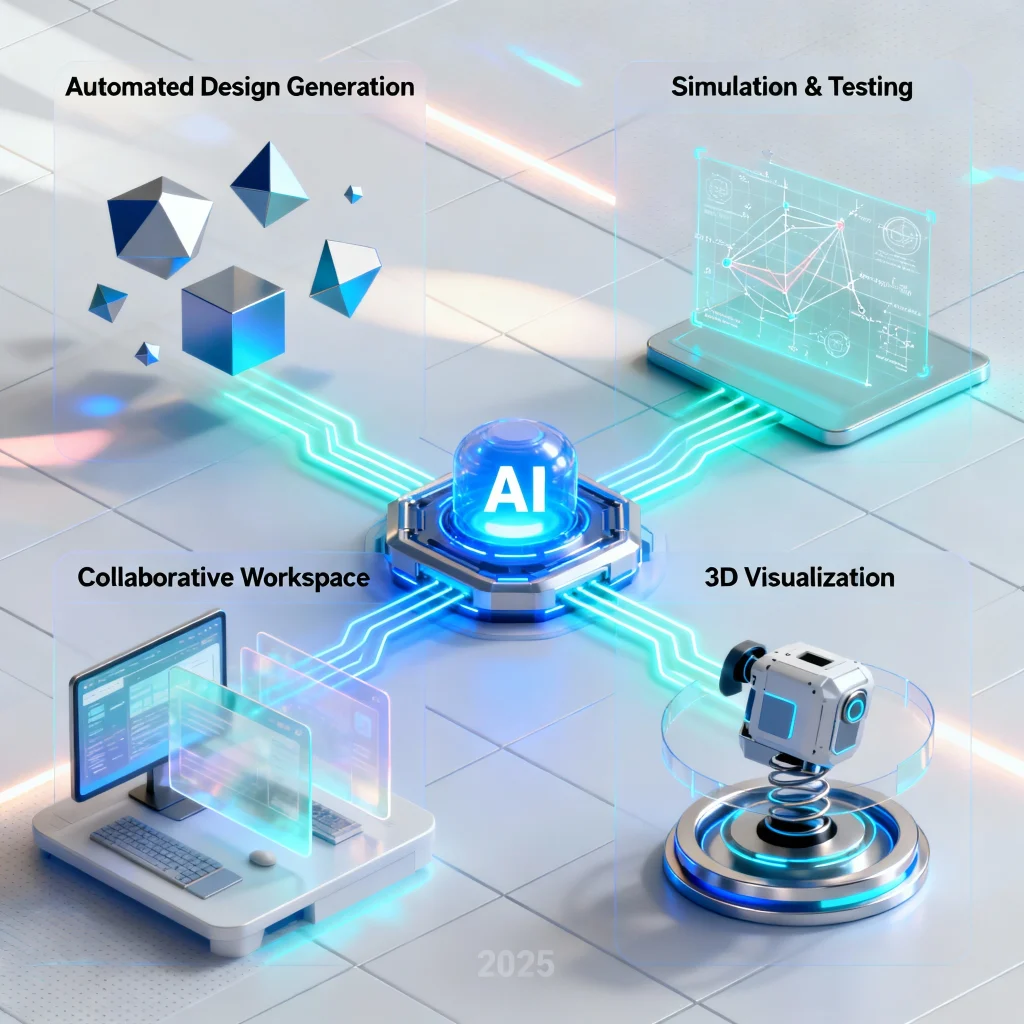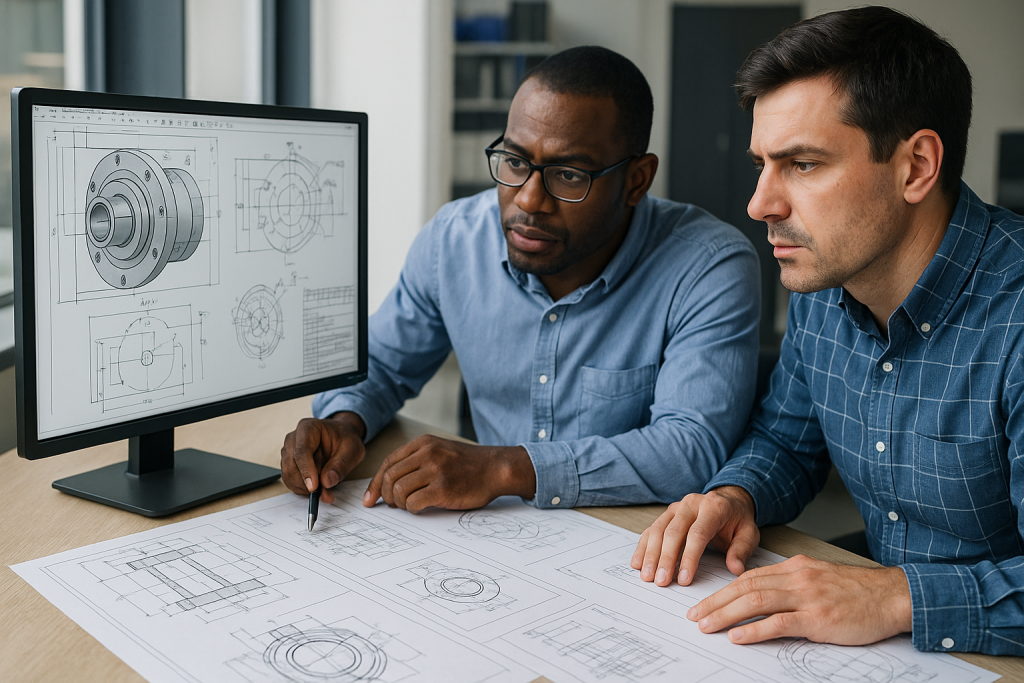
In 2025, artificial intelligence (AI) has moved from being an experimental tool to becoming a core driver of innovation in product development and prototyping. Companies are under constant pressure to shorten design cycles, reduce costs, and deliver functional prototypes faster. Integrating AI into your prototyping process allows you to automate design exploration, optimize manufacturing parameters, and detect defects in real time.
For manufacturers and engineers seeking professional prototyping services, companies like BOONA Prototypes provide CNC machining, 3D printing, sheet metal fabrication, and injection molding solutions—all areas that can be further enhanced with AI-driven workflows.
I. The Traditional Challenges in Prototyping Workflows
Despite technological advances, prototyping still faces challenges:
-
Manual iteration cycles increase design-to-production time.
-
Misalignment between design intent and manufacturability leads to rework.
-
Simulation and testing often require expensive, time-consuming resources.
-
Quality control depends heavily on human inspection, which can miss subtle defects.
This is where AI steps in—turning raw prototyping data into actionable insights.
II. The Role of AI in Prototyping (2025)
AI tools now cover almost every stage of prototyping:
-
Generative Design – AI creates geometry optimized for strength, weight, and cost.
-
Design for Manufacturability (DFM) – Automated feedback prevents costly redesigns.
-
Simulation & Testing – Machine learning reduces reliance on lengthy FEM/CFD runs.
-
CNC & 3D Printing Optimization – AI adjusts toolpaths, speeds, and supports.
-
Defect Prediction & Quality Control – Computer vision detects errors in real time.
-
Workflow Orchestration – AI allocates resources, schedules production, and reduces bottlenecks.
III. AI Across the Prototyping Pipeline
1. Concept & Design
AI-powered CAD assistants convert sketches into 3D models while evaluating manufacturability. Generative design algorithms also suggest multiple prototype variations to explore.
2. Simulation & Testing
AI-based surrogate models approximate expensive simulations, predicting mechanical stress or airflow with 90%+ accuracy but at a fraction of the cost and time.
3. CNC Machining & Toolpath Planning
In CNC machining, BOONA’s CNC services already support precision components. When integrated with AI, toolpath strategies are optimized, reducing machining time by up to 20% while extending tool life.
4. Additive Manufacturing & 3D Printing
With 3D printing services, AI can adjust layer height, orientation, and support structures dynamically. This prevents warping and increases part yield.
5. Injection Molding & Small-Batch Runs
AI helps injection molding services predict mold wear, cooling cycles, and optimal gating systems, which shortens turnaround time.
6. Quality Control & Post-Processing
Computer vision identifies microscopic defects, while predictive analytics recommend surface finishing options for better performance.
IV. Example Technical Data: AI in Prototyping Workflow
| Workflow Stage | Traditional Process Time | With AI Optimization | Cost Reduction | Accuracy Improvement |
|---|---|---|---|---|
| Concept to CAD Model | 3–5 days | 1–2 days | ~40% | Design validated in real-time |
| Simulation & Testing | 7–10 days | 2–3 days | ~50% | 90% surrogate accuracy |
| CNC Machining Toolpath Setup | 1–2 days | < 6 hours | ~30% | Optimized feed/speed |
| 3D Printing (Batch of 50) | 4–5 days | 2–3 days | ~25% | Higher part yield |
| Quality Control & Inspection | 2–3 days | < 1 day | ~35% | Defect detection >95% |
V. Implementation Strategy
To leverage AI effectively:
-
Build a data foundation – Collect machining logs, CAD files, defect reports.
-
Integrate with existing tools – CAD, CAM, and ERP must connect seamlessly.
-
Start small – Pilot AI for one process (e.g., CNC toolpath optimization).
-
Scale gradually – Expand to 3D printing, molding, and full workflow orchestration.
-
Train teams – Ensure engineers understand how to work with AI suggestions.
VI. Future Outlook (Beyond 2025)
-
Self-optimizing factories with AI managing entire prototyping lines.
-
AI-assisted material discovery leading to stronger, lighter composites.
-
Digital twins of prototyping facilities for real-time optimization.
-
Federated AI learning that allows companies to share process insights without sharing sensitive IP.
Conclusion
AI is no longer optional—it’s a competitive necessity for prototyping in 2025. By integrating AI across concept design, machining, 3D printing, and quality assurance, companies can reduce costs, accelerate timelines, and increase success rates.
For organizations seeking reliable partners, BOONA Prototypes offers AI-ready prototyping services spanning CNC machining, 3D printing, injection molding, and sheet metal fabrication—helping you move from idea to product with greater efficiency and confidence.
FAQs
1. How does AI improve the speed of prototyping?
AI reduces the number of manual design iterations by providing real-time manufacturability feedback, optimizing CNC toolpaths, and predicting defects before production. This helps companies shorten design-to-prototype cycles by up to 50%.
2. Can AI be applied to both CNC machining and 3D printing?
Yes. AI can optimize cutting speeds, feed rates, and toolpaths in CNC machining. For 3D printing, AI helps adjust support structures, orientation, and process parameters to improve yield and reduce material waste.
3. Is AI useful for small-batch or low-volume production?
Definitely. AI enhances injection molding and sheet metal fabrication workflows by predicting tool wear, optimizing cooling cycles, and improving scheduling. This makes low-volume manufacturing more cost-efficient and reliable.
4. What kind of data is needed to train AI for prototyping workflows?
AI systems rely on:
-
CAD and design files
-
Simulation results
-
Machine logs (CNC, 3D printing, molding)
-
Quality inspection data
-
Historical defect records
The more comprehensive the dataset, the more accurate the AI predictions.
5. How does AI reduce prototyping costs?
AI prevents costly rework by catching design-for-manufacturability errors early. It also reduces machine downtime, improves material utilization, and shortens testing phases, resulting in up to 30–50% savings in some prototyping pipelines.
6. Can AI ensure better quality prototypes?
Yes. With computer vision-based inspection and predictive analytics, AI can detect defects with over 95% accuracy. This ensures higher-quality prototypes that meet performance standards before scaling to production.
7. How can companies start integrating AI into their workflow?
Most companies begin with a pilot project—for example, AI-driven toolpath optimization in CNC machining. Over time, they expand to simulation, additive manufacturing, and quality control. Partnering with experts such as BOONA Prototypes helps ensure a smooth integration.
8. What are the main challenges in adopting AI for prototyping?
-
Lack of high-quality training data
-
Integration with existing CAD/CAM systems
-
Resistance to workflow changes
-
High upfront investment costs
However, the long-term ROI and efficiency gains outweigh these initial challenges.



